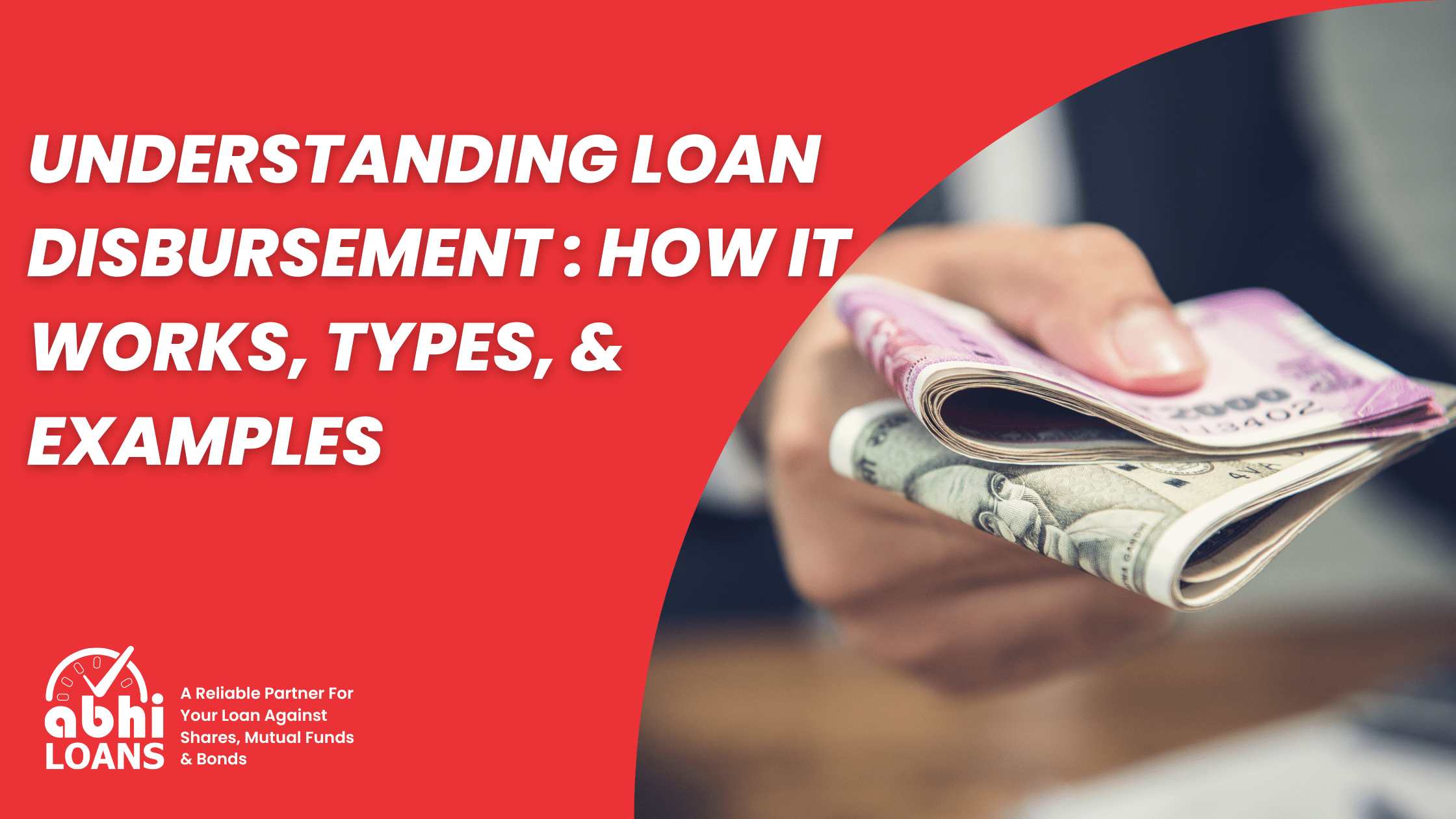Understanding Loan Disbursement: How It Works, Types, & Examples
Loan disbursement plays a key role in the borrowing process. The lender transfers the approved loan amount to the borrower during this stage. This step matters to lenders and borrowers alike. It signals the start of the repayment cycle and lets the borrower use the money for its intended purpose.
This blog aims to explore loan disbursement in depth. We’ll look at its different types and give some real-world examples to help you grasp the concept better.
What is Loan Disbursement?
The process of transferring the approved loan amount to the borrower’s account is known as Loan Disbursement. This happens after the lender checks and approves the borrower’s loan application and all required documents. The disbursement process marks the final step in the loan approval cycle coming after the approval and signing of the loan agreement.
Key Points in the Loan Disbursement Process:
- Approval of the Loan: The lender checks the borrower’s application, credit score, and loan purpose before giving the green light.
- Documentation: The borrower needs to hand in all the paperwork. This includes ID proof, pay stubs, property papers (for secured loans), and anything else the lender asks for.
- Loan Agreement: After the loan gets the go-ahead, both sides sign a contract. This spells out the loan’s rules such as interest rates, how long it lasts, when to pay it back, and other key points.
- Disbursement: Once all these steps are done, the lender sends the money to the borrower’s account. This kicks off the official loan period.
Types of Loan Disbursement
Loan disbursements change based on the loan type, lender rules, and borrower needs. Knowing these types can help borrowers pick the right loan for their situation.
1. Full Disbursement
A full disbursement happens when the lender gives the entire loan amount to the borrower in one go. This often occurs with personal loans, loan against mutual funds, car loans, and student loans where the borrower needs all the money upfront to meet specific goals.
2. Partial Disbursement
Partial disbursement releases the loan amount in chunks based on how the project moves forward or what the borrower needs. Home loans and construction loans often work this way when people need money at different building stages.
3. Direct Disbursement
With direct disbursement, lenders send the loan money straight to a third party instead of the borrower. This happens often with student loans and home loans. The money goes right to schools or home sellers.
Example: For a student loan, the lender pays the university to cover tuition. If there’s money left over, it goes to the student to pay for other school costs.
4. Balloon Payment Disbursement
This way of giving out loans holds back a big chunk of the money until the end of the loan term. You’ll see this in some business loans or real estate deals. It works when the borrower thinks they’ll have a lot of cash coming in later on.
Example: A real estate developer takes out a balloon loan to fund a commercial project. The lender gives a smaller amount at first, with most of the loan paid out once the property sells or gets leased.
How Loan Disbursement Works
The way loans get paid out can change a bit based on the loan type and the lender’s rules. But here are the main steps:
1. Applying for and Getting Approved for a Loan
To start, you apply for a loan and turn in all the needed paperwork. The lender then looks over your application to check your credit, make sure you can pay it back, and understand why you need the loan.
2. Checking Documents
After giving the green light to the loan, the lender checks all the paperwork the borrower has turned in. They look at things like who the borrower is, proof of how much money they make, property papers (if it’s a loan with collateral), and any other stuff they need to see.
3. Putting Pen to Paper on the Loan Deal
Once they’ve gone through all the papers, both sides – the person borrowing and the one lending – sign off on the loan agreement. This paper spells out how much money is being borrowed, what the interest rate is, how long the loan will last when payments are due, and any other rules that apply.
4. Handing Over the Cash
After the agreement gets signed, the lender gives out the loan money. How and when they hand it out depends on the loan type. Take personal loans, for instance – the full amount often comes right away. But with home loans, you might get the money in stages.
Things That Affect How Loans Get Handed Out
A bunch of stuff can have an impact on how the loan gets handed out such as:
- Credit Score: A high credit score often leads to faster approval and payout because the lender sees less risk.
- Loan Type: Secured loans take longer to pay out because they need property checks and legal work. On the other hand, unsecured loans like personal loans payout faster.
- Documentation: Complete and correct papers help to speed up or slow down the payout process. Any mistakes can cause delays.
- Lender Policies: Each lender has its own payout rules. Some might give money, while others might take more time if they need extra checks or papers.
Examples of Loan Disbursement
To get a clearer picture of how disbursement works, let’s check out some real-world examples:
1. Home Loan Disbursement
Amit wanted to buy a new apartment so he applied for a home loan. The lender approved his loan but asked Amit to hand over the property documents. The lender’s legal team then checked these documents. Once they confirmed everything was in order, John signed the loan agreement.
The lender then sent the first part of the loan straight to the person selling the property. They held onto the rest of the money until Amit showed them that the initial building phase was finished.
2. Education Loan Disbursement
Sushma got the green light for an education loan to cover her school fees and living costs for her studies overseas. The lender paid the tuition part straight to the university. The rest of the money for her daily expenses went into her account at the start of each term helping her manage her spending while in school.
3. Business Loan Disbursement
Riya, who owns a small bakery, asked for a business loan to make her shop bigger. The lender said yes and put all the money into her work account. Riya spent this cash on new tools fixing up her bakery, and getting more supplies, which helped her business grow.
Conclusion
Getting a handle on loan payouts is key for anyone borrowing money, as it has an impact on how and when you can get your hands on the cash. The loan type, the lender’s rules, and what you need will shape how the money is given out.
You might get all the money at once for personal use, receive it in stages for building a house, or see it paid straight to someone else. Each way of giving out the money has its job to do. If you know how it all works, you can make smart choices and make sure the loan does what you need it to do with your money.
Getting your loan money requires good planning and paying attention to the small stuff. Make sure you’ve got all your paperwork done and you know what your loan involves. This way, you’ll get your money without hassle helping you reach your money goals easily.

